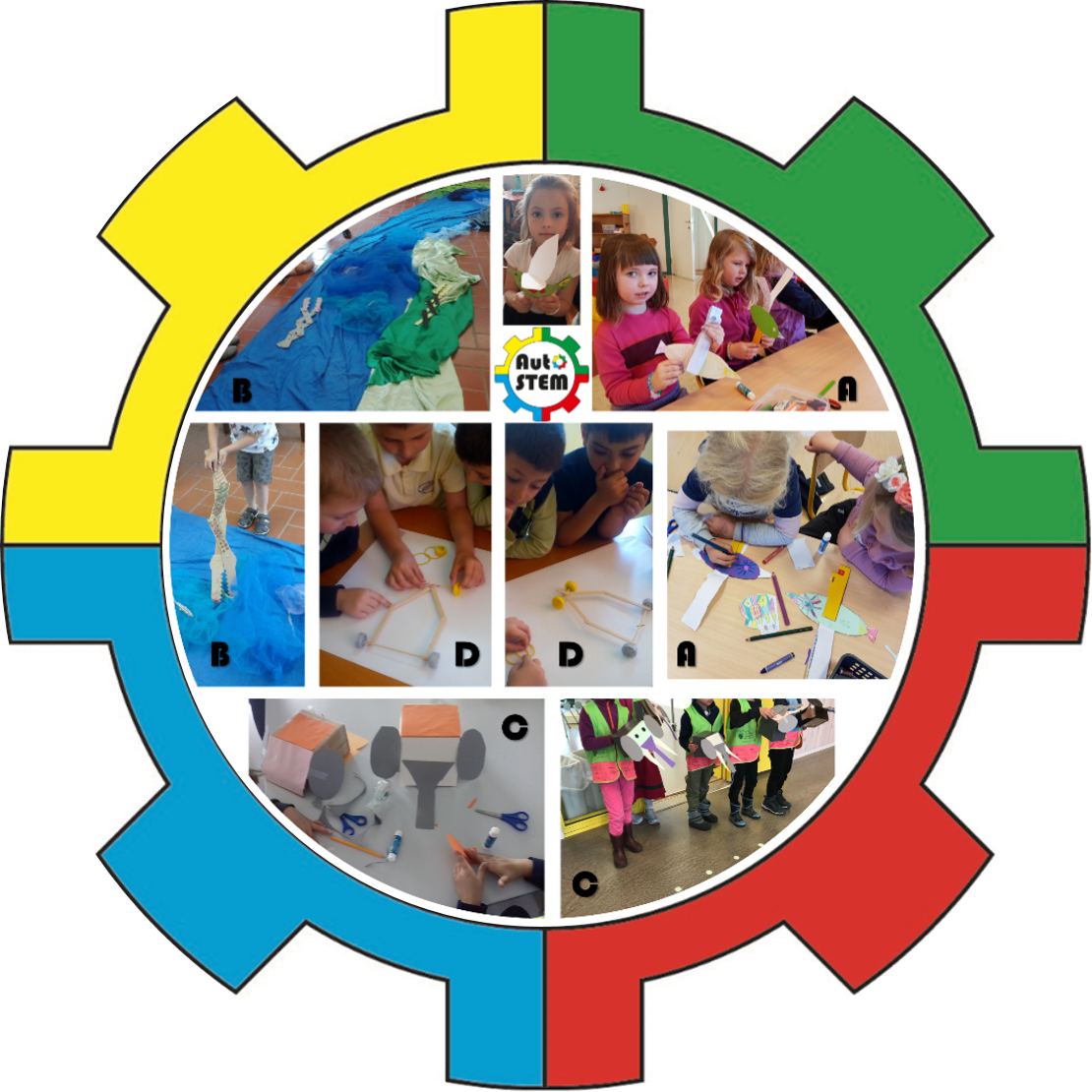Reporting is done by compiling the data collected through the various instruments available and allows a complete analysis of each activity as data obtained at different stages and through different instruments is considered.
As mentioned in the Step by Step guide for teachers, teachers can take photos, write down notes, develop informal observation (Step by step guide). Also reporting templates can be used in which are incorporated the data collected through the pre and post questionnaires, the pre and post interviews, the logbook-children, the observation guide – teachers, the questionnaire – teachers, the report template. All these resources can be used for collecting feedback and create learning stories.
Pre & Post questionnaires
The pre and post tests are done through questionnaires and/or interviews that aim to access how children perceive their knowledge about mechanisms and toys that move, their skills to develop automata and how interested they are in them and the subjects associated to them.
The comparison between the results of the pre and post teste allows to understand the learning achieved during the activity.
The post questionnaire can also collect the children opinion, and satisfaction, as well as their motivation and interest level and their perception about their own learning.
You can find various templates of this questionnaires and all of them can be adapted to your context and needs.
Different templates were developed taking children’s age into account:
- 4-5 years and
- 6-7 years.
Pre & post interview – children
Information for developing the pre- and post-tests can also be gathered through interviewing children. Click here or on the picture to access the templates for the interview guides that we have developed. The guides can be adapted to the specific characteristics of your activity.
Logbook – children
The logbook for children is a template with open questions that challenge children to report their ideas when they are observing automata already constructed, planning and implementing their own.
The logbook can include questions as as ‘What are your initial thoughts/questions?’, ‘ What is your plan to your own automata?’. Click here to download the logbook as a Word document. You can adapt it to your needs and situation.
Observation guide – teacher
The observation guide is a template that guides the observation done during the activity. This template allows you to take notes, and categorize your observation, making it easier to understand the collected data and draw conclusions about them.
Click here to download this template in Word format. You can adapt it to your needs and situation.
Questionnaire – teacher

The questionnaire for teachers aims to evaluate the implementation of AutoSTEM by teachers and educators, as well as to promote a reflection about the process.
Report – teachers
You can click here to download a template that guides you as a teacher or educator to report the implementation of an AutoSTEM activity for documentation. In the report, teachers can bring together different data collected, and introduce their own reflection about the process.
As it is mentioned on page 13 of the Step by Step guide, after the activity, the teacher may create a learning story that can be presented to the child, and shared with the child’s family, other teachers or educators. ‘Key elements of a learning story are the teacher’s interpretation of the child’s engagement, intentionality, relationships, competencies, and learning dispositions such as courage, curiosity, and perseverance. Children should be seen as ‘skilful communicators, experts in their own lives, rights holders and meaning makers’ as well as ‘social actors who are “beings” rather than “becomings”’ (Clark & Moss, 2011, p. 6 and 8). Therefore, a learning story highlights what the children can do, and are doing, rather than what they cannot do.’




